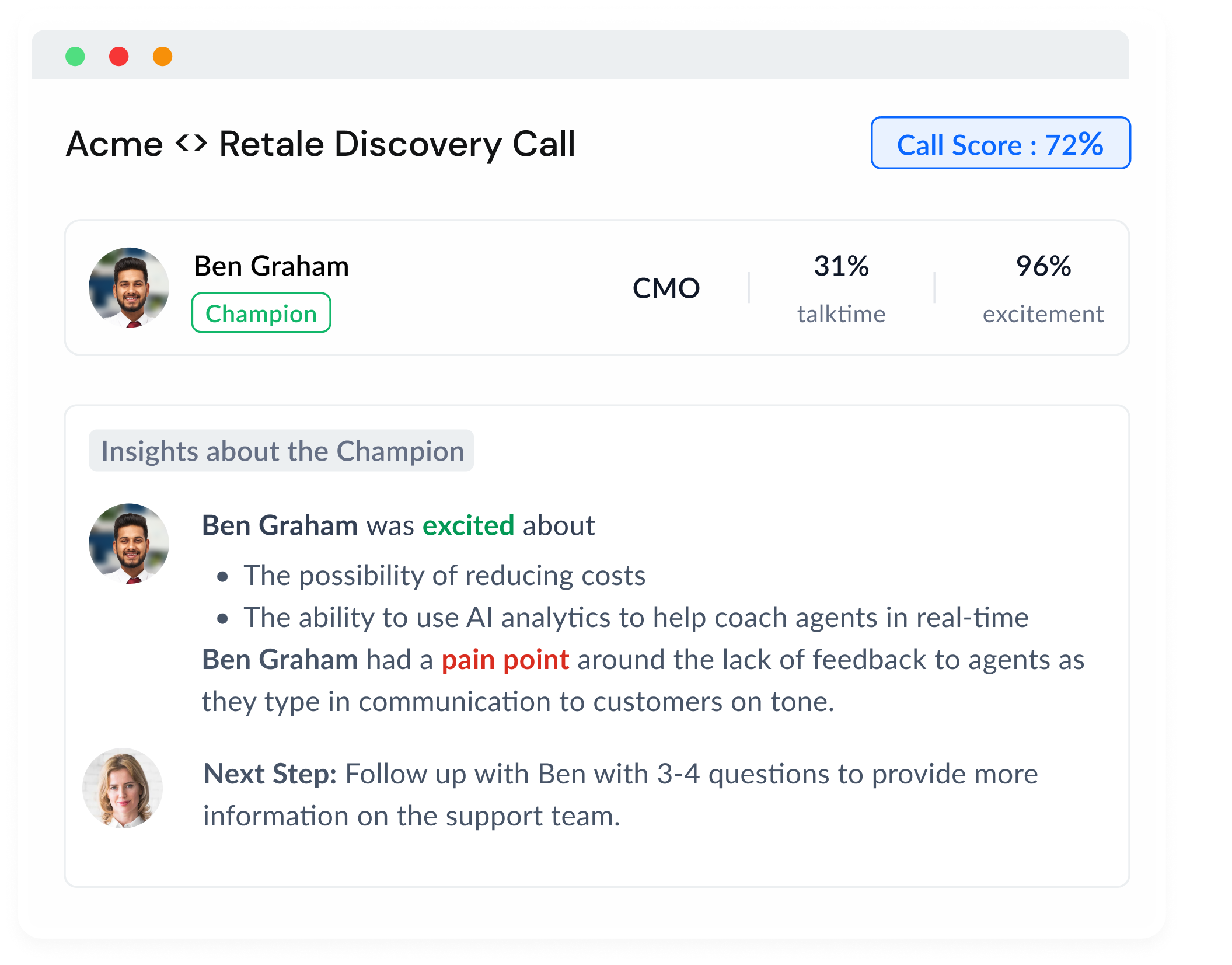An engaging product demo is the backbone of a successful sales call.
You might have made an authentic connection with your prospect, explained the data-driven benefits of your product, and followed your script flawlessly. But if your demo was a snooze fest, you’re unlikely to close the sale.
Your prospects are time-strapped and screen-fatigued. They have impending deadlines, Zoom meetings, and budgets to manage. If your product demo doesn’t engage your prospects’ interest and deliver immediate value, you’re going to fail at closing the sale–and worse, you’re going to bore and annoy them.
The good news is, you don’t have to be an entertainer to execute a product demo that captivates the interest and attention of your prospects. You simply need to keep a few key strategies in mind while designing and delivering your demo.
In the following article, we’ll take a look at six different strategies for an engaging product demo–as well as how to analyze (and improve) the success of your demo.
6 Strategies for an Engaging Product Demo
Your product demo has the potential to be long, overwhelming, and time-wasting. Or, it can be concise, punchy, and effective. Here are six strategies for delivering a product demo that’s worth your time and worth your prospect’s time.
Know your audience.
You need to know your audience–whether you’re introducing yourself (and your product) for the first time, demonstrating your product in action, or closing a sale. Your demo should showcase features that will be specifically beneficial to their company, and present convincing proof that your product will help them save time, money, and effort.
Before a demo, review their company, look at their social media profiles, research the space, and collect applicable data. You’ll want to know your audience’s:
- Everyday workflow–What does the breakdown of their tasks look like, and how do they communicate with others?
- Pain points–Where are they expending a lot of energy, performing unnecessary manual labor, or potentially making errors?
- Data points–How much time do they spend on tasks? How engaged and loyal are their clients? What about revenue?
Finally, you might want to get to know relevant personal information about your prospect. If their LinkedIn or Twitter profiles showcase hobbies, interests, or their family life, it’s fair game to bring up on a sales call. A little personability goes a long way on a sales call.
Frontload the most important information.
When you go to a restaurant, you want to see the menu right away. When you’re looking for a house, you don’t want to wait until the end to see the best features of the property. When you’re shopping for clothes, you don’t want to try on 15 pairs of jeans before landing on the pair that fits you just right.
Likewise, your prospects don’t want to have to wait to see and understand the value of your product. Resist the urge to build-up to the most important of your product demo and frontload the most valuable, relevant features of your product at the start of the demo. People tend to “bookend” memories–remembering what came first and last. Make sure the most important part of your demo comes first (and finish strong).
Keep your demo short and simple.
Though the myth of the “8 second attention span” has been debunked, the average person still has a limited attention span (most studies say around 20 minutes). Your call is still a conversation, and can exceed 20 minutes. But to keep the unbroken attention of your prospect, don’t embark on a 60-minute monologue.
Don’t go into too much detail, even if your product can do a million different things. Instead, focus on a few specific use cases that are immediately relevant to your prospect. Show your prospect how your product can help them solve their pain points in granular ways, and then allow them to ask more questions if necessary.
Ask questions.
To keep prospects engaged during your demo, keep asking strategic questions throughout the conversation. Avoid asking “yes or no” questions or rhetorical questions that answer themselves (How will this feature save you time?) Instead, ask clarifying questions that help your prospects to let down their defenses and think through their objections.
At the close of the demo, ask questions that invite your prospects to take action–whether that’s to schedule a follow-up call, approach a decision-maker, or make a decision about buying your product.
Be authentic.
Forbes cited authenticity as one of the most important qualities a company can include in their core values. Authenticity creates a company culture that encourages people to be themselves and celebrates honesty. It can improve performance, create trust, and build loyalty.
In a sales context, Authenticity builds trust with your prospect and helps you to develop a genuine connection with them during your demo. Being authentic during a product demo looks like:
- Engaging in real conversation with your prospect
- Keeping their best interest in mind
- Asking real questions and really listening to answers
Your prospects can read through a performance. Seek to make a genuine connection with them during your demo by being your authentic self, listening to their pain points, and responding as a real person.
Finally, Analyze Engagement
Once you’ve finished your product demo, you’re ready to analyze. You might feel like you developed a genuine connection with your prospect, kept them engaged, and finished with a strong close. But your own perception can be misleading–and if the sale doesn’t close, your demo might have been lacking.
Sybill can help you get an objective insight–and improve your sales demos–by telling you when your prospect was engaged, excited, bored, or completely disengaged during your product demo. By watching and analyzing the behavior and movement of your prospect during the call, Sybill’s AI can help you understand what parts of the demo were most effective, and which parts could be improved.
To learn more about how Sybill can help you get detailed insight into your sales calls and dramatically improve your product demos (and sales), click here.














.png)





